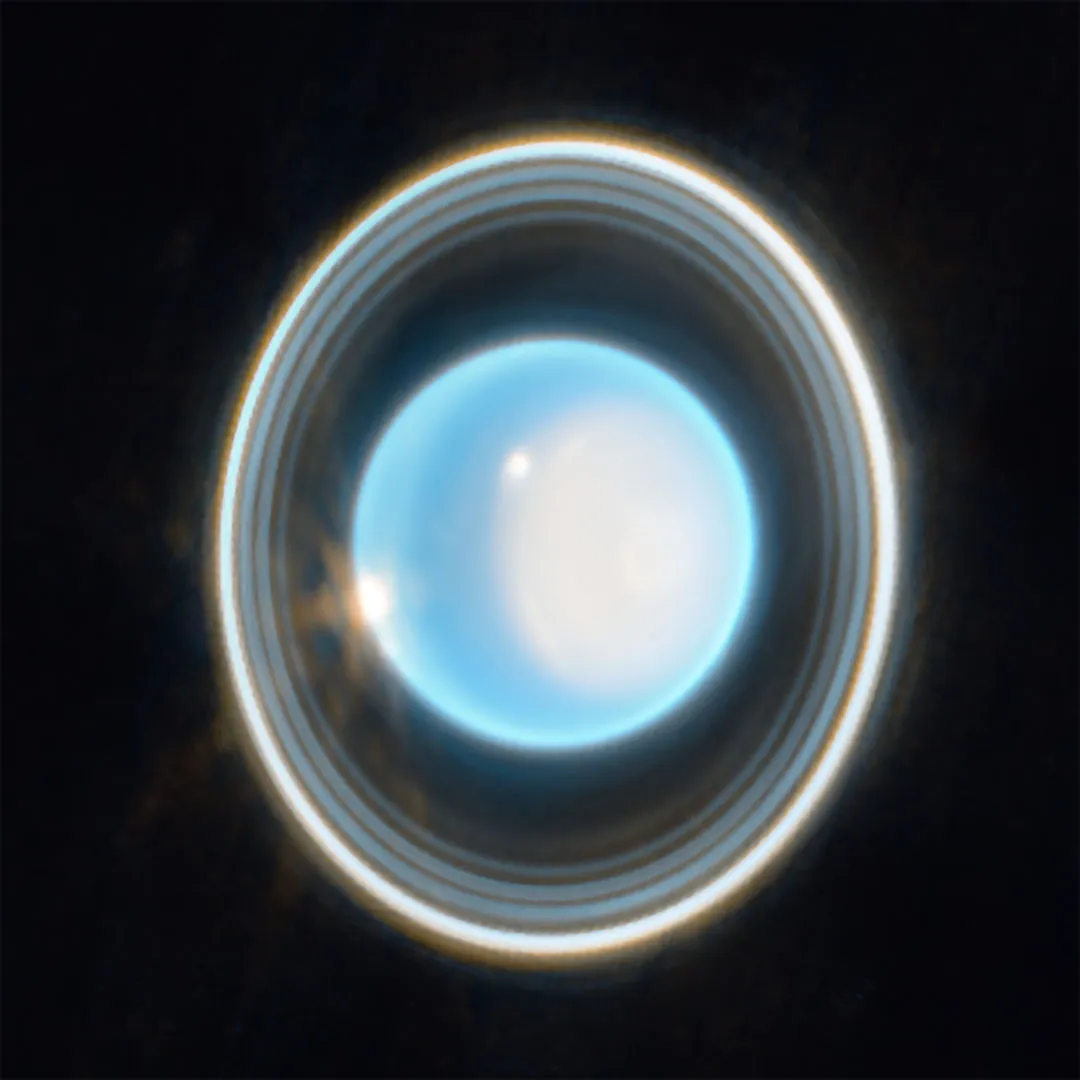The Hubble Space Telescope has been observing Uranus for the past two decades, and what it has found is giving astronomers fresh insight into the planet's atmosphere.
What's more, the lessons learned by studying Uranus with Hubble over 20 years can assist the study of atmospheres of planets orbiting distant stars.

Studying Uranus
Uranus is a strange world.
It's tipped on its side, relative to the rest of the planets in the Solar System.
And Uranus is the coldest planet in the Solar System, despite its ice giant neighbour Neptune being further from the Sun.
Planetary scientists got their first close-up view of Uranus in 1986, when Voyager 2 flew by the planet.
Voyager 2's view of Uranus makes it look like a featureless, light blue ball.

Yet the Hubble Space Telescope is equipped with instruments that have enabled astronomers to track seasonal changes in its atmosphere from 2002 to 2022.
Uranus takes about 84 Earth years to orbit the Sun, so even though Hubble has been observing it for 20 years, it has only seen the planet during its northern spring.
This is when the Sun moves from shining directly over Uranus's equator to shining over its north pole, which will happen in 2030.

What Hubble found at Uranus
Uranus' atmosphere is mostly hydrogen and helium, with small amounts of methane and traces of water and ammonia.
It's this methane that gives Uranus its light cyan colour, by absorbing red wavelengths of sunlight.
Hubble's 20-year study of Uranus found "complex atmospheric circulation patterns," say scientists.
Data tracking methane distribution in the planet's atmosphere shows a downwelling in the polar regions and upwelling in other regions.
The team behind this study was led by Erich Karkoschka of the University of Arizona and Larry Sromovsky and Pat Fry from the University of Wisconsin.
The results are helping build a clearer picture of how sunlight affects Uranus's atmosphere, and how the chemical distribution changes over time.
This knowledge, in turn, can be used as a proxy for studying exoplanets – planets beyond our Solar System – of similar size and composition.

Methane at Uranus and what it means
Hubble observed Uranus four times over 20 years: in 2002, 2012, 2015 and 2022.
It found methane is not uniformly distributed across the planet, but is depleted near the poles.
Yet this depletion of methane at Uranus's poles remained relatively constant over two decades.
The aerosol and haze structure did change, brightening in the north polar region as the planet approaches northern summer solstice in 2030.
These images of Uranus captured during the 20-year study show the south polar region (left) getting darker as winter approached in that hemisphere, while the north pole (right) brightened as summer approached in the opposite hemisphere.
The top row shows Uranus in visible light. In the second row, a false-colour image of the planet is shown, produced using visible and near-infrared light observations.
Colour and brightness correspond to the amount of methane and aerosols.
Green indicates less methane than blue areas. Red areas show no methane.
The red areas are at the edge of Uranus, where the planet's stratosphere has hardly any methane at all.

The two bottom rows in black and white show aerosols and methane, as observed in 1,000 different wavelengths from visible to near infrared.
In the third row, bright areas mean more clouds; dark areas mean fewer clouds.
We can see how aerosols near the north pole increase dramatically, showing up as dark during early northern spring, then turning brighter more recently.
Aerosols seem to disappear at the left edge, indicating that radiation from the Sun causes changes in aerosol haze in Uranus's atmosphere.
Methane depletion remains quite high in both polar regions.
In the fourth row, bright areas show little methane; while dark areas show the full amount of methane.
But the Hubble Space Telescope isn't done with Uranus yet. It will continue to study Uranus as the planet approaches summer in its northern hemisphere, giving astronomers more insight into this fascinating ice world.
